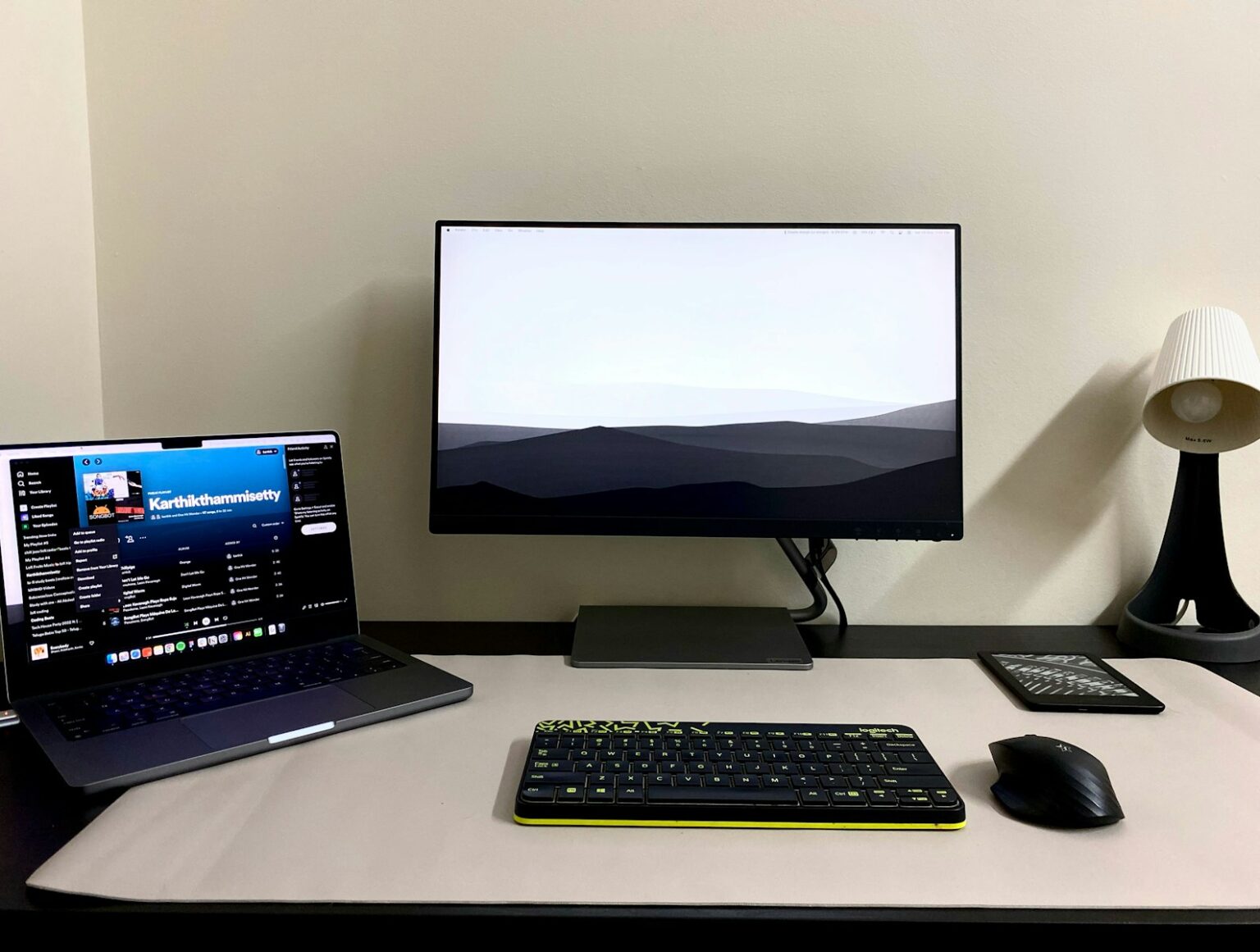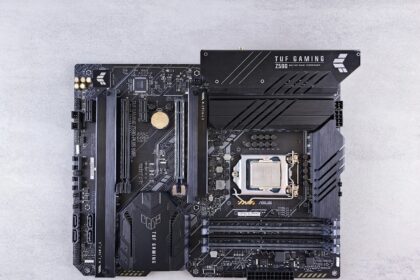Quick answer: many models include built‑in speakers, but a large subset—especially gaming and Alienware lines—do not. If your screen supports audio, sound travels over HDMI, DisplayPort, or some USB‑C ports.
This short guide shows users how to confirm a monitor’s model, pick the correct playback device in Windows, and enable on‑screen audio so your computer routes sound to the display. You’ll learn which connections carry audio and why the right cable and port pairing matter for video and audio quality.
Next steps: check the monitor’s manual or model page and test audio by selecting the screen as the default playback device. If audio won’t play, unmute or raise volume in the monitor’s OSD, update graphics and audio drivers, and run Windows’ sound troubleshooter.
For more detail on gaming and Alienware models that lack built‑in output, see the official support note: audio on Dell gaming and Alienware.
Do Dell Monitors Have Speakers: The Short Answer and Model Reality Check
Quick reality check: some models include built‑in audio, but many performance displays—especially gaming monitor and Alienware lines—skip onboard sound to focus on refresh rate, resolution, and panel quality.
Most office-oriented displays are more likely to include speakers. In contrast, a curved gaming monitor or a dell curved gaming product often omits audio hardware. The notable exception is the Alienware 55 OLED AW5520QF, which does include internal sound.
- Windows can list a playback device for a monitor even when no speaker exists.
- If no sound is heard, connect a headset or external speakers to the monitor’s headphone or speaker‑out port.
- When a display supports audio, it arrives over HDMI, DisplayPort, or USB‑C—confirm both ends support audio.
| Product Type | Built‑in Audio Likely? | Typical Audio Port |
|---|---|---|
| Office display | Yes | 3.5mm headphone jack |
| Gaming monitor | No (usually) | External headset or speakers |
| Alienware (example AW5520QF) | Yes (select models) | HDMI / DisplayPort / USB‑C |
Tip: check your product’s User Guide for the exact number and type of audio ports before assuming the monitor will act as a speaker.
How to Enable Monitor Speakers on Windows
Getting audio to play through a display usually takes just a few checks: model, cable, Windows output, and on‑screen volume.
Check model and connections
First, confirm your exact model number and specs so you know whether the screen includes built‑in audio. Look for HDMI, DisplayPort, or USB‑C with DP Alt Mode in the manual.
Select the playback device in Windows
On Windows, right‑click the volume icon in the lower‑right corner of the taskbar and open Sound settings. Choose the display as the default output device so the computer sends audio to the correct device.
Use the monitor OSD and update drivers
Open the monitor OSD, navigate to Audio, and ensure the output is unmuted and volume is up. The screen’s OSD can override Windows volume settings.
Update your GPU and audio drivers to the latest version to fix common HDMI/DisplayPort audio problems. If sound still fails, run Windows’ “Troubleshoot sound problems.”
- Confirm built‑in audio by checking specs and the product manual.
- Use a cable that carries audio: HDMI or DisplayPort, or USB‑C with DP Alt Mode.
- Set the display as default in Sound settings via the taskbar icon.
- Enable hidden devices in Manage sound devices if the playback device is not visible.
- Test alternate cables or ports to rule out a bad connector.
| Action | When to use it | Expected result |
|---|---|---|
| Confirm model/specs | Before troubleshooting | Know if sound is supported |
| Switch to HDMI/DisplayPort/USB‑C | Cable or adapter is in question | Audio and video over one connection |
| Set default playback device | Windows shows multiple outputs | Computer routes audio to chosen display |
| Unmute and raise OSD volume | Windows output is correct but silent | Sound plays from internal drivers |
Troubleshooting No Sound from a Dell Monitor
Start with the basics: ensure the screen is powered and the cables are firmly seated. Swap an HDMI or DisplayPort cable and try another port on both the screen and the computer to rule out a bad connector or handshake problem.
Check system and panel settings. Open Windows sound settings and confirm the correct playback device is selected. Then open the monitor OSD and unmute or raise the panel volume; the screen can be muted independently of the computer.
Test multiple apps to rule out app-level problems. If one app is silent while others play, adjust that app’s audio output or reinstall it. Run Windows “Troubleshoot sound problems” to detect misrouted audio or sample rate mismatches.
When the display appears as a playback device but produces no sound: remember many gaming monitor and Alienware models lack built‑in output. In that example, plug a headset or external speakers into the correct jack on the panel. Some units separate headset and speaker ports—check labels carefully.
If issues persist, reset the screen to factory defaults from the OSD to clear any hidden audio filter or input mapping. Collect your model name, cable types (hdmi/displayport/usb), ports tested, and steps tried, then contact Dell support for further help.
| Check | When to use | Expected result |
|---|---|---|
| Swap HDMI/DisplayPort cable | Intermittent or no audio | Eliminates bad cable/port |
| Verify OSD volume/unmute | Windows shows correct playback device | Restores panel audio if not muted |
| Run Windows troubleshooter | Audio misrouting or disabled device | Auto-fixes common configuration issues |
| Factory reset + contact support | All other steps fail | Technical escalation with model details |
Ports, Accessories, and Use Cases: Getting Audio the Right Way
Choose the correct port and accessory to make sure audio follows the active input without extra setup.
Using the headphone port: if your display lacks built‑in sound, plug a headset or powered external speaker into the monitor’s headphone port. This routes audio with the active video input and keeps switching simple.
Some products split headset and speaker ports. Check the panel labels or the User Guide before connecting a mic or dedicated speaker output.
- Prefer compact accessories for small desks to preserve tilt and swivel range.
- For larger setups, use freestanding 2.0 or small soundbars that fit the display size and corner clearance.
- USB DACs or wired headsets often outclass basic built‑in audio for gaming monitor sessions.
Gaming and curved setups: curved gaming monitor configurations typically benefit more from external headsets or bigger speakers for positional clarity. Note that Dell soundbars do not fit Dell Gaming Monitor stands, so plan for freestanding or headset solutions.
| Accessory | Best port | Ideal use | Notes |
|---|---|---|---|
| Wired headset | Monitor headphone jack or USB | Competitive gaming, clear voice chat | Low latency; battery not required |
| Powered 2.0 speakers | 3.5mm speaker‑out or audio-out | Media and general gaming | Need power; requires desk space |
| USB DAC / USB headset | USB port on PC or monitor | Better audio quality, easy switching | Bypasses weak panel amp; may need drivers |
| Soundbar | Line-out or HDMI ARC (if supported) | Compact home theater feel | Not compatible with Dell Gaming Monitor stands; check mounting |
Conclusion
Final tip: select the screen as the default playback device on the taskbar, confirm the correct HDMI/DisplayPort/USB connection, and unmute or raise volume in the on‑screen menu to restore audio quickly.
Key takeaways: many office products include built‑in sound, but most gaming monitor models do not. Keep graphics and audio drivers current to filter out common issues and save time when troubleshooting.
If the panel lacks output, use a headset or external speakers via the headphone jack or connect speakers to the computer. With these steps, users can get usable audio for video calls or gaming in minutes and choose higher‑quality gear when resolution, rate, and richer sound matter.
FAQ
Do Dell monitors include built‑in audio?
Some models ship with integrated speakers, but many do not. Budget and office displays often lack audio, while select Ultrasharp, P‑series, and a few curved gaming and Alienware models include them. Always check the product specs or user manual for confirmation.
How can I enable speakers on a monitor that supports audio?
Connect your PC using an audio-capable link such as HDMI, DisplayPort, or USB‑C with audio. Then choose the monitor as the playback device in Windows sound settings or via the taskbar speaker icon. Finally, open the monitor’s OSD menu to ensure speakers are unmuted and volume is set above zero.
Which cable should I use for the best chance of sound working?
Use HDMI, DisplayPort, or USB‑C that supports audio. VGA and DVI don’t carry sound. If your laptop or GPU supports USB‑C Alt Mode, a single cable can deliver video, audio, and power on compatible monitors.
The monitor shows up in playback devices but I hear nothing—what now?
First, confirm the monitor’s speakers aren’t muted in the OSD and Windows volume is up. Swap cables and ports to rule out a faulty connection. Update graphics and audio drivers, then run Windows “Troubleshoot sound problems.” If the monitor still lists as a device with no audio, the panel may lack internal speakers or require a firmware update.
Can I use the monitor’s headphone jack for external audio?
Yes. If the display has a headphone or line‑out port, it routes audio from the monitor to headsets or powered speakers. That’s a simple way to add sound without external USB or Bluetooth solutions.
My curved gaming monitor is missing sound—are gaming models different?
Gaming displays vary. Some curved gaming and Alienware screens include speakers, but many prioritize picture quality and refresh rate over built‑in audio. For immersive setups, players often use external speakers or headsets for better bass and positional audio.
Will updating drivers help get audio over HDMI or DisplayPort?
Yes. Installing the latest GPU and motherboard/chipset audio drivers can resolve audio handshake issues over HDMI/DP. Check the manufacturer’s support site for current drivers and any firmware updates for the monitor.
What if I’ve tried everything and still have no sound?
Reset the monitor to factory defaults via the OSD, try a different source device, and test with another cable. If problems persist, contact Dell technical support with your monitor model and serial number for guided troubleshooting or warranty service.
Are there scenarios where a monitor appears as a playback device but truly has no speakers?
Yes. Some displays expose an audio endpoint for future features or USB hub audio but ship without physical speakers. Product documentation and detailed spec sheets will indicate whether speakers are actually present.
Is it better to use external speakers for a gaming or multimedia setup?
For richer, louder sound and better positional cues, external powered speakers or a good gaming headset outperform most built‑in monitor speakers. Use the monitor’s audio out to connect them, or consider USB/Bluetooth audio devices for flexibility.























